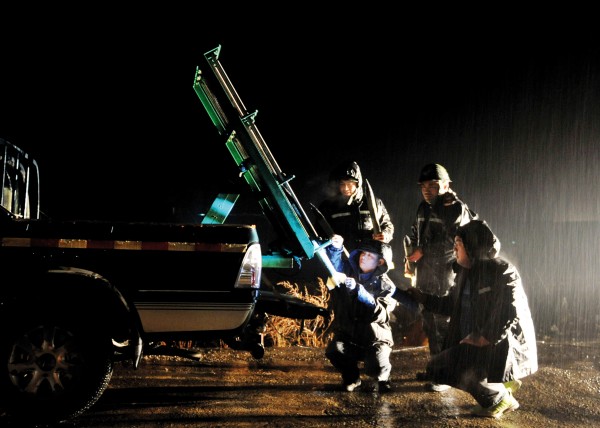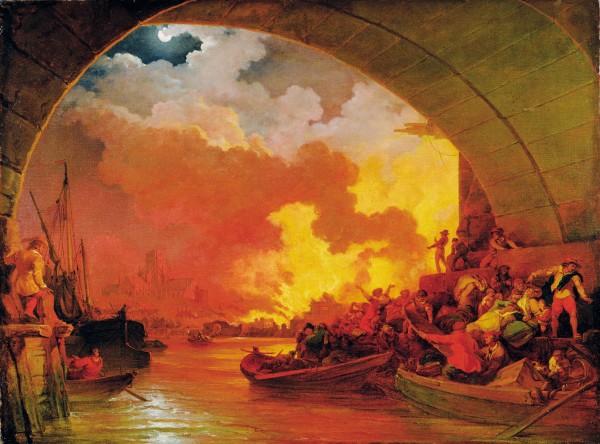Carbon and climate
Though we don’t think about it much, the element carbon is all around (and within) us. Diamonds, pencil leads and soot are all forms of pure carbon, and living tissue is made of carbon combined with other elements.
In the atmosphere, carbon dioxide makes up three hundredths of one per cent of the air we breathe. We contribute to this reservoir of atmospheric carbon every time we breathe out.
Atmospheric carbon dioxide (along with water vapour, methane and some other gases) plays a vital role in keeping the Earth’s surface warm enough for life to exist. It does this by capturing some of the heat radiated away from the Earth’s surface and sending a portion of it back to Earth.
The process occurs like this: most of the Sun’s energy arrives at the Earth as visible light, and, as such, passes easily through the atmosphere to the Earth’s surface, heating it up. The warmed Earth re-radiates some of this incoming energy as infra-red radiation, which we can not see with our eyes, though we have invented machines such as infra-red cameras and night-sights for guns that can detect it.
The Earth radiates heat out to space 24 hours a day, but only receives energy from the Sun during the daylight hours. If atmospheric carbon dioxide, along with the other trace gases, did not intercept part of the outgoing infra-red radiation and send it back down, the average temperature of the Earth would be around -15°C, and life would not be possible.
This trapping of heat is what is known as the Greenhouse Effect, and it is regarded as a scientific fact. Where there continues to be intense debate is the extent to which the Greenhouse Effect is being enhanced by increases in gases such as carbon dioxide and methane, brought about by human activities.
Since the Industrial Revolution began, the amount of carbon dioxide in the atmosphere has steadily increased, as increasing amounts of carbon-rich fossil fuels have been burned in more and more countries around the world (see graphs). This increase has been recorded directly by measuring the carbon dioxide concentration in bubbles of air trapped inside the Greenland and Antarctic ice sheets.
The bubbles are accessed by drilling through the ice and extracting an ice core. Each bubble can be dated by counting the annual “growth” layers of the ice, in much the same way that trees can be dated by counting their rings.
Carbon dioxide is taken out of the atmosphere by the process of photosynthesis, which occurs in plants both on land and in the water. In the oceans, a significant amount of carbon dioxide is absorbed by phytoplankton, which, although very small, are present in their billions.
Through photosynthesis, carbon enters the food chain.
In the sea, some of the phytoplankton die and fall to the ocean floor, where their remains form part of the bottom sediment. The carbon in their skeletons is “locked up” (not recyclable) for millennia.
Because growing plants remove carbon dioxide from the atmosphere, planting forests is seen as a way to partially offset the increase in atmospheric carbon dioxide caused by burning fossil fuels such as oil and natural gas. This reasoning was behind the recent decision to permit the construction of a gas-fired power station at Stratford, in Taranaki, only if a new forest was planted nearby.
The forest-for-powerstation equation is, however, not as straightforward as it seems. Once a forest has become mature, the release of carbon dioxide from decaying plant matter on the forest floor easily equals the atmospheric uptake from continued growth. So you would need to plant another forest to keep the carbon ledger “in the black.”
The picture is also complicated by the presence of animals in a forest. Ruminants, such as deer, produce methane in the form of flatulence when they digest plant matter. Kilo for kilo, methane is a more potent greenhouse gas than carbon dioxide, although methane’s overall contribution is mitigated by its shorter lifetime in the atmosphere.
Release of methane in New Zealand is expected to make up over half of New Zealand’s contribution to enhanced greenhouse warming over the next 20 years. Most of this methane comes from sheep and cattle, which also make a significant greenhouse contribution through increased nitrous oxide production in the soil as a result of urinating on pasture.
An estimate of the consequences of world-wide emissions of greenhouse gases has been made by the Intergovernmental Panel on Climate Change, a body of scientists jointly sponsored by the United Nations and the kVorld Meteorological Organisation. If current rates of emission continue unchecked, the IPCC predicts a rise of global mean temperature of 1°C by the year 2025 and 3°C by the end of the next century. These increases in turn would cause a rise of mean sea level of 65 cm by the end of the next century, resulting mainly from thermal expansion of the oceans (warm water has a greater volume than cool water).
One degree or even three degrees may not seem like much of a temperature change, until you remember that the difference between the global mean temperature now and at the height of the last ice age is thought to have been as little as 5°C, and between now and the “Little Ice Age” from the 14th to the 19th century to have been only half a degree.
Predicting the change of climate for individual countries and regions is far harder than predicting changes to mean global temperature. In New Zealand, for example, we know that the El Nifio phenomenon produces a trend opposite to the global trend. That is, during an El Nino the global average temperature is up (by approximately half a degree) because a large area of tropical ocean is several degrees warmer than average, but in New Zealand the weather is cooler because we experience more southwest airstreams bringing air over us that has its origin nearer to the South Pole.
The frequent El Nifios New Zealand has experienced over the last 20 years help to explain why glaciers such as Franz Josef and Fox are advancing when glaciers in most other parts of the world are retreating.
Predicting climate change is further complicated by the fact that prolonged extreme weather in one region is often accompanied by the opposite type of extreme weather in an adjacent region. This is caused by the phenomenon of “blocking” [see New Zealand Geographic, Issue 7] where a slow-moving or stationary anticyclone extends into polar latitudes. When this happens, the region on the eastern side of the blocking high experiences frequent outbreaks of cold polar air, while the region to the west of the block experiences frequent incursions of tropical air.
This is what happened in June and July of this year, when persistent southerlies brought frequent snow to the South Island, and mean monthly temperatures in parts of Canterbury were more than 4° below average. At the same time, New South Wales was having a drought and above-average temperatures, while in Argentina unusually heavy snow killed two million sheep.
At the same time, blocking was also occurring in the northern hemisphere. Prolonged drought in England led to extreme water shortages. Among the more bizarre effects reported from there were that aphids had died out, and consequently ladybirds had begun biting people. Also, that water supply companies had switched the way they described the people they served: from “customers” to “consumers”—a subtle, if telling, change.
Meanwhile, extreme flooding occurred in western Europe and Asia, with considerable loss of life and damage estimated in the order of billions of dollars.
These events have prompted one world authority on climate to speculate that if climate statistics gathered earlier this century were still considered a valid description of our current climate, then the combination of weather patterns seen around the world this year would add up to a once-intwo-thousand-years event.
Perhaps the more reasonable assumption is that the climate is already changing, and weather events which were once considered extreme—to be expected only once in 100 years—may now occur as frequently as once in 10.
Looks like we’re in for an interesting ride.

















